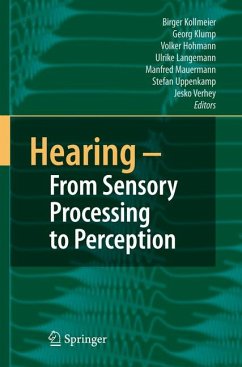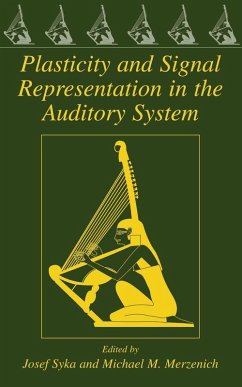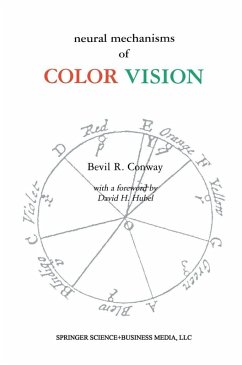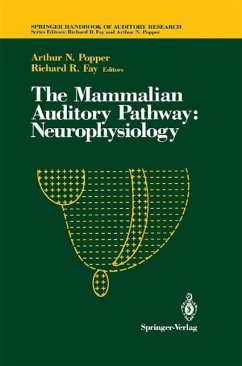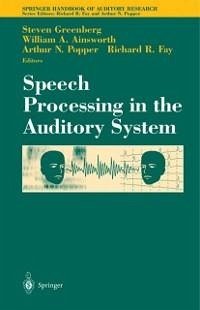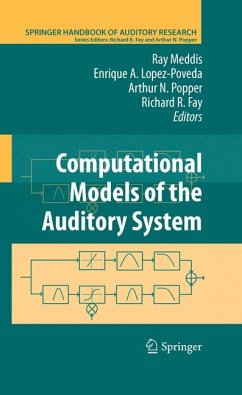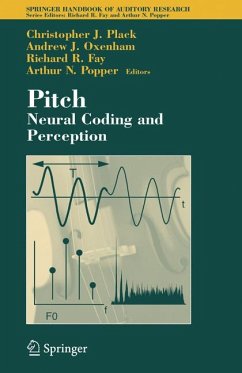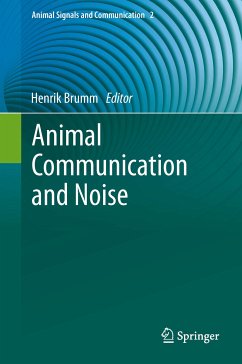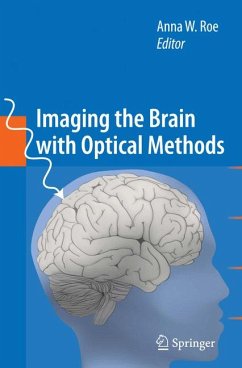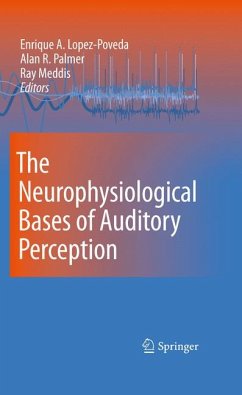
The Neurophysiological Bases of Auditory Perception (eBook, PDF)
Versandkostenfrei!
Sofort per Download lieferbar
160,95 €
inkl. MwSt.
Weitere Ausgaben:

PAYBACK Punkte
80 °P sammeln!
This volume contains the papers presented at the 15th International Symposium on Hearing (ISH), which was held at the Hotel Regio, Santa Marta de Tormes, Salamanca, Spain, between 1st and 5th June 2009. Since its inception in 1969, this Symposium has been a forum of excellence for debating the neurophysiological basis of auditory perception, with computational models as tools to test and unify physiological and perceptual theories. Every paper in this symposium includes two of the following: auditory physiology, psychoph- ics or modeling. The topics range from cochlear physiology to auditory a...
This volume contains the papers presented at the 15th International Symposium on Hearing (ISH), which was held at the Hotel Regio, Santa Marta de Tormes, Salamanca, Spain, between 1st and 5th June 2009. Since its inception in 1969, this Symposium has been a forum of excellence for debating the neurophysiological basis of auditory perception, with computational models as tools to test and unify physiological and perceptual theories. Every paper in this symposium includes two of the following: auditory physiology, psychoph- ics or modeling. The topics range from cochlear physiology to auditory attention and learning. While the symposium is always hosted by European countries, p- ticipants come from all over the world and are among the leaders in their fields. The result is an outstanding symposium, which has been described by some as a "world summit of auditory research. " The current volume has a bottom-up structure from "simpler" physiological to more "complex" perceptual phenomena and follows the order of presentations at the meeting. Parts I to III are dedicated to information processing in the peripheral au- tory system and its implications for auditory masking, spectral processing, and c- ing. Part IV focuses on the physiological bases of pitch and timbre perception. Part V is dedicated to binaural hearing. Parts VI and VII cover recent advances in und- standing speech processing and perception and auditory scene analysis. Part VIII focuses on the neurophysiological bases of novelty detection, attention, and learning.
Dieser Download kann aus rechtlichen Gründen nur mit Rechnungsadresse in A, B, BG, CY, CZ, D, DK, EW, E, FIN, F, GR, HR, H, IRL, I, LT, L, LR, M, NL, PL, P, R, S, SLO, SK ausgeliefert werden.



